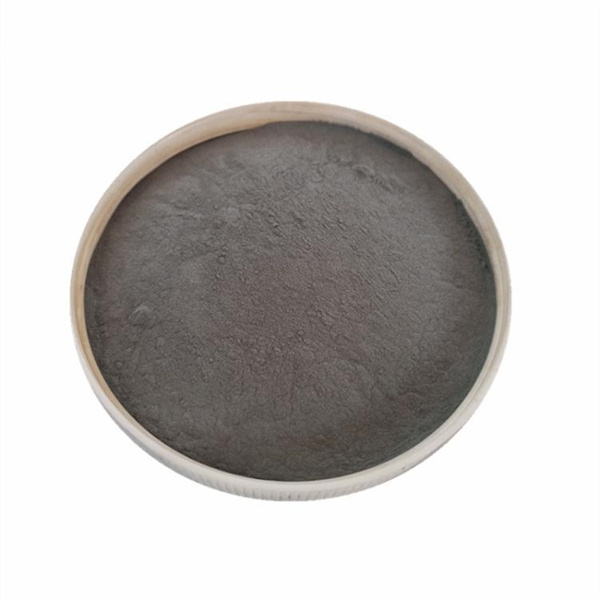快速成型制造3D打印技术正在彻底改变从航空航天到医疗设备等各个行业的制造工艺。金属三维打印是其中一个关键的进步领域,它可以直接根据三维 CAD 模型制造复杂的金属零件,而无需昂贵的工具或模具。
金属增材制造需要专门的设备和材料,以达到将金属粉末熔化并融合成固体物体所需的极端温度。目前最常用的金属 3D 打印技术包括粉末床熔融、定向能沉积、粘合剂喷射和薄片层压。
通过金属三维打印技术生产的零件的材料特性在很大程度上取决于所用金属粉末和合金的成分和特性。本文概述了最常见的金属增材制造材料及其特性、应用和供应商。
金属快速成型制造材料类型

可用于粉末三维打印的金属合金种类繁多。最常用的包括
| 材料 | 说明 |
|---|---|
| 不锈钢 | 含铬、镍、锰、钼、钛、铜的铁基合金。耐腐蚀、强度高。 |
| 铝合金 | Al-Si、 铝硅镁合金.密度低,导热性高。 |
| 钛合金 | Ti-6Al-4V Ti-6Al-4V ELI.优异的强度重量比和生物相容性。 |
| 镍合金 | 铬镍铁合金 625、718。耐热、耐腐蚀。用于航空航天部件。 |
| 钴铬合金 | 钴铬钼合金。生物相容性好,硬度高。用于牙科植入物和关节。 |
| 贵金属 | 金、银、铂。导电、耐腐蚀、美观。 |
| 工具钢 | H13,马氏体时效钢。硬度高,可热处理。用于工具和模具。 |
| 铜合金 | 铜锌青铜合金。导电性和导热性。 |
这些基础材料可以通过各种组合进行混合和合金化,以获得不同应用所需的特定材料特性。
金属增材制造材料性能
用于增材制造的金属粉末的主要特性包括
粒径分布
- 粉末床熔化的粉末粒度通常为 15-45 微米。
- 小于 15 微米的颗粒可提高密度,但会降低流动性。
- 大于 45 微米的较大颗粒会降低精度和表面光洁度。
- 均匀的尺寸分布可实现最佳的包装密度。
形态和形状
- 球形粉末可实现顺畅的流动和包装。
- 不规则的形状会导致体积密度和粉末床均匀性变差。
流动性
- 粉末必须均匀地铺满粉床,以获得均匀的粉层。
- 流动性取决于形状、粒度分布和表面纹理。
- 可添加流动剂以改善粉末流动性。
密度
- 粉末的堆积密度越高,印刷部件的孔隙率就越低。
- 表观密度通常为真实固体密度的 40-60%。
- 敲击密度表示流量和填料效率。
纯净
- 高纯度可减少缺陷和污染。
- 氧气、氮气含量保持在百万分之 100 以下。
- 最小卫星(小颗粒附着在大颗粒上)。
水分含量
- 湿气会导致粉末结块,降低流动性。
- 水分含量保持在 0.02% 以下(按重量计)。
- 储存在真空或惰性气体环境中的粉末。
除了粉末特性外,块状金属合金的成分和微观结构也赋予了 AM 部件重要的性能特性:
实力
- 屈服强度为 500 兆帕至 1 千兆帕以上,具体取决于合金。
- 热处理可通过沉淀硬化提高强度。
硬度
- 维氏硬度从 150 HV 到 400 HV 以上。
- 硬度可通过热处理进行局部调整。
密度
- 可达到接近全密度 >99%。
- 残余孔隙率取决于工艺参数。
表面处理
- 印刷后的表面粗糙度为 10-25 微米 Ra。
- 需要进行机加工、打磨、抛光,以实现精密加工。
抗疲劳性
- 与锻造材料类似,但具有各向异性。
- 取决于构建方向和内部缺陷。
耐腐蚀性
- 合金成分从低到高,差异很大。
热性能
- 导电性和膨胀系数接近锻造合金。
- 取决于微观结构导致的构建方向。
电阻率
- 10-20% 以内的锻造材料。
- 孔隙率越高,电阻率越大。
通过选择优化的粉末和合金,金属 AM 可以制造出致密的零件,其机械性能在许多情况下可与传统制造工艺相媲美。然而,根据制造方向的不同,其性能仍然是各向异性的。
金属增材制造材料应用
利用金属快速成型技术的主要应用包括
航空航天 复杂的喷气发动机、火箭和高超音速飞行器部件。减轻重量,提高性能。
医疗 定制骨科植入物、假肢、手术工具。根据解剖结构定制的生物兼容金属。
汽车 部件、性能部件和工具的轻量化。提高强度和功能集成度。
工业 用于泵、压缩机和发动机的终端生产零件。缩短交付周期,降低库存。
消费者: 珠宝、时尚配饰、小玩意儿。独特的高价值几何形状。
防守: 用于野外作业、防护装备和武器装备的坚固部件。按需制造。
制模: 共形冷却通道可提高生产率。直接打印模具。
能源 油/气组件耐腐蚀,可在极端环境下使用。
金属 AM 具有出色的机械性能、精度和设计自由度,因此在许多行业的原型、工具和最终使用的生产部件中都很有价值。
金属快速成型工艺能力
不同的金属 3D 打印工艺在兼容材料、零件尺寸、精度、表面光洁度等方面的能力各不相同:
| 过程 | 材料 | 准确性 | 完成 | 速度 |
|---|---|---|---|---|
| 粉末床融合 | 大多数合金 | ±0.1-0.2毫米 | 粗糙、多孔 | 中型 |
| 定向能量沉积 | 任何合金 | ±0.3-1毫米 | 粗糙 | 高 |
| 粘结剂喷射 | 大多数合金 | ±0.2毫米 | 所需渗透 | 高 |
| 板材层压 | 大多数合金 | ±0.1毫米 | 良好 | 慢 |
粉末床融合 可提供最佳精度和表面光洁度,但速度较慢。 定向能量沉积 这样就可以快速制造大型近净成形零件,但精度较低。 粘结剂喷射 速度更快,但需要渗透才能达到最大密度。 板材层压 仅限于较薄的部分。
最佳工艺取决于应用要求--根据零件尺寸、材料选项、精度、速度和后处理需求进行选择。
受欢迎的金属快速成型合金系统
以下是增材制造中最常用的一些金属合金系统及其主要特征:
不锈钢
| 合金 | 组成 | 属性 | 应用 |
|---|---|---|---|
| 17-4PH | 铬、镍、铜 | 高强度、耐腐蚀 | 航空航天、工业 |
| 15-5PH | 铬、镍 | 沉淀硬化 | 航空航天、汽车 |
| 316L | 铬、镍、钼 | 耐腐蚀、生物兼容 | 医疗、海洋 |
| 304L | 铬、镍 | 耐腐蚀性 | 消费品 |
铝合金
| 合金 | 组成 | 属性 | 应用 |
|---|---|---|---|
| AlSi10Mg | 铝、硅、镁 | 密度低,强度高 | 航空航天、汽车 |
| AlSi7Mg | 铝、硅、镁 | 低密度、高延展性 | 汽车、消费者 |
| A2024 | 铝、铜、镁 | 高强度 | 航空航天结构 |
| Al6061 | 铝、镁、硅 | 中等强度,耐腐蚀 | 航空航天、海洋 |
钛合金
| 合金 | 组成 | 属性 | 应用 |
|---|---|---|---|
| Ti6Al4V | 钛、铝、钒 | 高强度重量比 | 航空航天、医疗 |
| Ti6Al4V ELI | 低间隙 | 抗断裂性 | 航空航天 |
| Ti64 | 钛、铝、钒 | 热处理性能 | 航空航天、汽车 |
| Ti 2 级 | Ti | 卓越的耐腐蚀性 | 工业、海洋 |
镍合金
| 合金 | 组成 | 属性 | 应用 |
|---|---|---|---|
| 铬镍铁合金 718 | 镍、铁、铬 | 高强度、耐腐蚀 | 航空航天、石油和天然气 |
| 铬镍铁合金 625 | 镍、铬、钼 | 抗氧化和抗腐蚀 | 航空航天、化工 |
| 哈氏合金 X | 镍、铁、铬 | 抗氧化、耐高温 | 航空航天、工业 |
钴铬合金
| 合金 | 组成 | 属性 | 应用 |
|---|---|---|---|
| 钴铬钼合金 | 钴、铬、钼 | 生物相容性好,硬度高 | 医疗植入物、牙科 |
| 钴铬钨镍 | 钴、铬、钨、镍 | 高硬度、高强度 | 牙科、切割工具 |
| 钴铬钼硅 | 钴、铬、钼、硅 | 生物相容性好,疲劳强度高 | 医疗植入物 |
通过根据应用要求选择最佳合金,增材制造技术可按需 3D 打印出高性能金属零件。
用于增材制造的常用金属粉末等级
目前,大多数主要金属粉末供应商都提供专门用于增材制造的优化粉末牌号。以下是一些最常用的牌号:
不锈钢粉
| 材料 | 粉末等级 | 颗粒大小 | 供应商 |
|---|---|---|---|
| 17-4PH | Philloy 17-4、17-4PH NX2 | 15-45 微米 | 霍加纳斯,木匠添加剂 |
| 316L | 316L CX, 316L-Si-dura | 15-45 微米 | 林德,概念激光器 |
| 304L | CL20ES,304L CX | 15-45 微米 | 概念激光,卡彭特添加剂 |
铝合金粉
| 材料 | 粉末等级 | 颗粒大小 | 供应商 |
|---|---|---|---|
| AlSi10Mg | AlSi10Mg ALEA、AlSi10Mg CX | 25-45 微米 | 林德,概念激光器 |
| AlSi7Mg | AlSi7Mg AM | 25-45 微米 | 林德 |
| Al6061 | 6061 CX | 15-45 微米 | 木匠添加剂 |
钛合金粉
| 材料 | 粉末等级 | 颗粒大小 | 供应商 |
|---|---|---|---|
| Ti6Al4V | Ti64 ELIT、Ti64 23 级 | 15-45 微米 | AP&C, 林德 |
| Ti6Al4V ELI | Ti64-ELI CX | 15-45 微米 | 木匠添加剂 |
镍合金粉
| 材料 | 粉末等级 | 颗粒大小 | 供应商 |
|---|---|---|---|
| 铬镍铁合金 718 | 718 ALEA AM、718-P 粉末 | 10-45 微米 | 林德、普莱克斯 |
| 铬镍铁合金 625 | 625 CX、铬镍铁合金 625-Si-dura | 15-45 微米 | 卡彭特添加剂,概念激光 |
钴铬合金粉
| 材料 | 粉末等级 | 颗粒大小 | 供应商 |
|---|---|---|---|
| 钴铬钼合金 | CoCrMo CX、数字钴铬合金 | 5-25 微米 | 木匠添加剂,Arcam |
| 钴铬钨镍 | CC W-Ni CX | 5-25 微米 | 木匠添加剂 |
这些经过优化的粉末牌号可确保金属增材制造的高质量和可重复性能,适用于常见的航空航天、医疗和工业合金。
金属增材制造粉末成本
根据合金成分、纯度、粒度分布、供应商和采购量的不同,AM 所需的金属粉末成本会有很大差异:
| 材料 | 每公斤费用 |
|---|---|
| 不锈钢 316L | $50 – $120 |
| 铝 AlSi10Mg | $50 – $100 |
| 钛合金 Ti64 | $150 – $500 |
| 铬镍铁合金 718 | $150 – $300 |
| 钴铬合金 | $250 – $500 |
在金属自动成型技术中,粉末成本占整个零件成本的很大一部分。采用 AM 技术的行业包括航空航天、医疗、汽车、石油和天然气,这些行业的高价值合金证明了成本的合理性。随着产量的增加,价格也在下降。通过粉末回收系统对废粉进行再利用,也有助于降低每个零件的总成本。
金属快速成型制造后处理
大多数金属 AM 工艺生产的零件表面粗糙,内部存在一些气孔。通常需要进行额外的后处理:
- 从模板上取下 - 切割、打磨或电火花线切割,以去除支撑和分离零件。
- 表面处理 - 加工、打磨、抛光、喷砂,以提高表面光洁度。
- 缓解压力 - 通过热处理来消除 AM 制造过程中产生的残余应力。
- 热等静压 - 通过高压消除内部空隙,提高密度。
- 热处理 - 沉淀硬化和时效处理可提高机械性能。
- 涂料 - 必要时,涂上耐磨/耐腐蚀功能涂层。
通过正确的后处理,金属 AM 部件可以达到极高的密度和精密的表面光洁度,可与传统制造的金属部件相媲美。
金属增材制造设计指南
要充分利用金属 AM 的优势并避免潜在的缺陷,建议遵循设计准则:
- 尽量减少需要支撑的悬挑结构
- 调整部件的方向,减少阶梯式表面处理效果
- 使用薄壁、格状结构以减轻重量和减少材料用量
- 将组件合并为单一的复杂部件
- 采用保形冷却通道和仿生设计
- 设计内部通道和空隙,使其具有自承重能力
- 为未施粉区域预留检修孔
- 根据构建方向计算各向异性属性
- 设计宽大的圆角和圆角半径
通过采用 "为自动化而设计 "的思维方式,工程师可以充分利用这些创新能力。
金属增材制造的未来
金属快速成型制造在材料、工艺、应用和采用方面都取得了长足进步。然而,在提高速度、成本、质量和材料选择方面仍存在巨大的机遇。
设备制造商 正在开发更大的制造包络面和多激光系统,以提高生产率。闭环监控和先进的质量控制系统将有助于提高一致性和可靠性。
材料供应商 目前的重点是鉴定更多优化的 AM 合金,包括镍超合金、工具钢、难熔金属等高温材料。功能分级和复合金属粉末将提供更多的性能调整。
软件 在设计、模拟、优化、机器学习和自动化方面取得的进步将使更多的人更容易接受 AM。系统连接和数字制造方法将使生产更加分散和灵活。
应用 在航空航天领域,发动机和结构部件的应用将继续快速增长。随着成本的降低,汽车、石油和天然气、医疗设备和消费电子产品的应用也将加速。快速制造和大规模定制将成为现实。
金属 AM 行业正处于一个激动人心的时刻,因为新的参与者和新的创新技术将进入这个高速增长的市场,预计到 2028 年,该市场规模将超过 10,000 亿美元。
金属快速成型 - 常见问题
以下是有关金属快速成型制造材料和工艺的一些常见问题的答案:
哪些类型的金属可以进行 3D 打印?
大多数主要的工业合金都可以印刷,包括不锈钢、铝、钛、镍、钴铬、工具钢、金银等贵金属以及铜合金。新合金的质量也在不断提高。
可以达到什么样的精度和光洁度?
尺寸精度通常在 ±0.1-0.3% 左右,公差为 ±0.1-0.2mm。印刷后的表面粗糙度为 10-25 μm Ra,但可通过机加工和抛光得到显著改善。
材料性能与传统制造相比如何?
大多数添加剂部件的微观结构和性能可与铸造或锻造材料相媲美。机械性能达到或超过航空航天级钛合金和镍合金等材料的标准。
3D 打印后如何对部件进行后处理?
后处理包括去除支撑、消除应力、表面精加工(如 CNC 加工、研磨和抛光)以及所需的任何热处理。某些关键应用可能需要热等静压 (HIP),以消除内部空隙并提高密度。
金属 AM 部件有哪些关键设计原则?
设计准则包括尽量减少悬垂、优化建造方向、结合晶格和内部结构、使用薄壁以及合并组件。仿生和保形冷却设计可提高性能。
